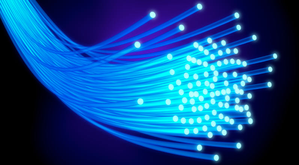Fiber Optic Cabling

An increasing number of companies from a wide range of industries are investing in fiber cabling. San Diego businesses are increasingly relying on Network Cabling San Diego, the cities leading fiber cabling installer. LA has a rapidly growing need for technological advancement in the area of digital communications, and fiber cabling constitutes the most advantageous option to date. Fiber optics installations should be done by installers with proven track records of success.
Fiber cabling refers to cables that house one or more optical fibers – specifically, tiny strands of optically pure glass. Although the fibers are only the thickness of a human hair, they can carry information over long distances with very little signal degradation.
Generally, these cables consist of a protective tube appropriate for the conditions of the location in which the cable is installed. Inside the outer casing, fiber elements coated individually with layers of plastic are contained. Polyimide or acrylate polymer is commonly used for this coating, preventing damage to the fibers without affecting the optical waveguide structure.
Applications of Fiber Optic Cabling include:
- Telephony
- Internet
- Cable TV
- Medical Imaging
- Mechanical Engineering Inspection
- Many more
The infrastructure of many industries has been vastly improved by the advent of fiber optics. The technology has improved the way business is done, how fast it is done, and has even presented the possibility of new applications solely based on fiber optic cabling systems that were never before possible.
Fiber Optic Cable Deployment is Useful for Nearly All Industries, including:
- Telecommunications
- Computer Networking
- IT
- Medical
- Dental
- Countless Others
Numerous benefits are introduced by the utilization of fiber cabling. San Diego businesses often make use of the technology for optical communication, which is any type of telecommunication whose transmission medium is light.
High bandwidth requirements can be easily accommodated via fiber optic cabling. LA companies are discovering that fiber cabling is far superior to copper cabling for several reasons.
Benefits of Fiber Optic Cabling versus Copper Cabling:
- Higher Bandwidth Capability
- Greater Efficiency
- Reduced Cost
- Increased Data Security (More Difficult to Tap)
- No Interference (Non-Conductive)
- No Grounding Needed
- Reduced Power Consumption
- Lighter and Thinner
- Resistant to Atmospheric Conditions
- Unaffected by Chemical and Water Exposure
- Impervious to Corrosion
- Can Be Installed in Close Proximity to Electrical Cables
- No Dangers Even when Cable is Broken (Uses Light, Not Electricity)
- No Risk of Fire
Several considerations apply for selecting an installer of fiber cabling. San Diego companies should seek the most qualified, competent and knowledgeable installer for all of their digital communication needs, as they pertain to fiber optic cabling. LA is a competitive area, and having an optical data network that is deployed properly can be the edge needed to outdo competition within a company’s respective industry.
- Experience
- Expertise
- Availability of Free Price Quotes
- Product Availability
- Ability to Create Custom Fiber Cabling Solutions for Your Business

Fiber optic connectors connect to ends of fiber optic cable as the name implies. The most significant factors are the type of optic fiber contact and the type of connector. To get an idea of what this really means we can examine of few of the major classifications. There is an angled physical contact connector. This connector uses a physical contact that is angled at each end of the connector. There is also what is referred to as a straight physical contact. This design utilizes a more or less flat surface at each connector point. Some variations include connectors with a dimple and a point that fit together when mate-able connectors are united.
In addition to physical contact points having different designs and resultant differences in performance, the various connectors are joined using a variety of different mechanisms. For example some are spring operated and require simply to be pushed together. Some have a screw connection that involves turning the tips to secure the connection. Others utilize a number of other methods. Each method has benefits and some have possible negatives. Among these are speed, size (especially when installing wall-plates) and protection of the physical contacts.
A number of connectors have become common within specific industries and applications. You can find additional information about these emerging standards online. It is is recommended by many though to use a single variety of connector throughout a network when possible.

